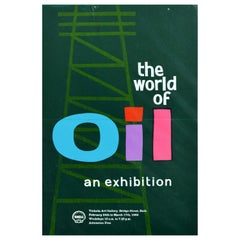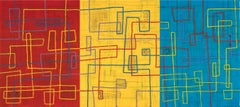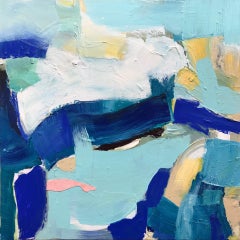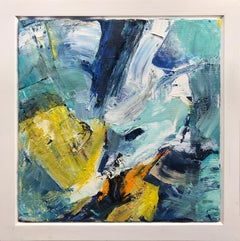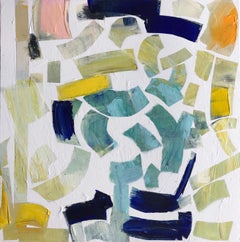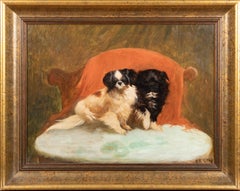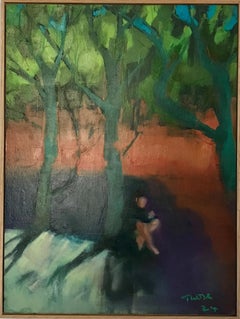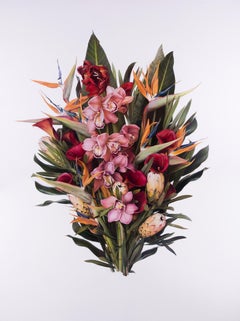Used Victoria Art
1960s British Used Victoria Art
Paper
2010s Abstract Used Victoria Art
Encaustic, Wood Panel
21st Century and Contemporary Contemporary Used Victoria Art
Canvas, Varnish, Acrylic
21st Century and Contemporary Abstract Used Victoria Art
Canvas, Glaze, Acrylic
21st Century and Contemporary Abstract Geometric Used Victoria Art
Varnish, Acrylic
1970s Contemporary Used Victoria Art
Lithograph
19th Century Used Victoria Art
Canvas, Oil
2010s Contemporary Used Victoria Art
Oil
2010s Photorealist Used Victoria Art
Canvas, Oil
1970s American Mid-Century Modern Used Victoria Art
Ceramic, Wood, Walnut
2010s Abstract Used Victoria Art
Paper, Etching
2010s Contemporary Used Victoria Art
Drypoint, Etching
19th Century Used Victoria Art
Oil
2010s Abstract Used Victoria Art
Etching
2010s Abstract Used Victoria Art
Etching
1930s Czech Art Deco Used Victoria Art
Porcelain
2010s Contemporary Used Victoria Art
Etching
2010s Contemporary Used Victoria Art
Oil
Early 2000s Impressionist Used Victoria Art
Watercolor, Paper
1970s Mid-Century Modern Used Victoria Art
Terracotta, Art Glass, Cork
2010s Contemporary Used Victoria Art
Etching
2010s Other Art Style Used Victoria Art
Paper, Ink, Acrylic
2010s Realist Used Victoria Art
Watercolor, Handmade Paper
21st Century and Contemporary Contemporary Used Victoria Art
Lambda
1950s American Realist Used Victoria Art
Board
2010s Contemporary Used Victoria Art
Photographic Paper
Late 19th Century American Modern Used Victoria Art
Lithograph
2010s Contemporary Used Victoria Art
Oil, Canvas
2010s Contemporary Used Victoria Art
Archival Ink
2010s Used Victoria Art
Photographic Paper
2010s Abstract Used Victoria Art
Etching
2010s Contemporary Used Victoria Art
Canvas, Digital
2010s Contemporary Used Victoria Art
Archival Paper, Photographic Paper, C Print, Color, Polaroid
2010s Contemporary Used Victoria Art
Archival Paper, Photographic Paper, C Print, Color, Polaroid
2010s Abstract Used Victoria Art
Canvas, Oil
2010s Contemporary Used Victoria Art
Archival Paper, Photographic Paper, C Print, Color, Polaroid
1850s Victorian Used Victoria Art
Oil, Canvas
20th Century Abstract Geometric Used Victoria Art
Wood, Oil, Pencil
2010s Used Victoria Art
Photographic Paper
2010s Contemporary Used Victoria Art
Etching, Paper
2010s Used Victoria Art
Photographic Paper
2010s Used Victoria Art
Photographic Paper
21st Century and Contemporary Used Victoria Art
Archival Pigment
21st Century and Contemporary Contemporary Used Victoria Art
Archival Pigment
21st Century and Contemporary Used Victoria Art
Archival Pigment
Early 20th Century Modern Used Victoria Art
Laid Paper, Drypoint, Etching
20th Century Used Victoria Art
Oil, Board
2010s Post-Modern Used Victoria Art
Paper, Lambda
1940s Used Victoria Art
Early 2000s Realist Used Victoria Art
Oil
21st Century and Contemporary Contemporary Used Victoria Art
Spray Paint, Canvas, Crayon, Acrylic
21st Century and Contemporary Abstract Used Victoria Art
Paper, Etching
Graham FransellaFigure on Sand, Graham Fransella, Etching, Abstract, Statement Artwork, Yellow, 2019
21st Century and Contemporary Used Victoria Art
Etching
2010s Contemporary Used Victoria Art
Mixed Media
Early 2000s Contemporary Used Victoria Art
Offset
2010s Contemporary Used Victoria Art
Canvas, Oil
2010s Contemporary Used Victoria Art
Archival Paper, C Print, Color, Archival Pigment, Polaroid
2010s Contemporary Used Victoria Art
Archival Paper, C Print, Color, Archival Pigment, Polaroid
2010s Abstract Used Victoria Art
Canvas, Acrylic
1960s Used Victoria Art
Canvas, Acrylic
- 1
- ...
Used Victoria Art For Sale on 1stDibs
How Much is a Used Victoria Art?
- What is the use of mandala art?1 Answer1stDibs ExpertApril 12, 2024The use of mandala art is often spiritual. In both Buddhism and Hinduism, creating mandalas can represent how sorrow turns into joy, and the act of destroying them is a reminder of the temporary nature of all things. People who produce mandalas often find the act to be meditative and calming. On 1stDibs, find a variety of fine art from some of the world's top galleries and dealers.
- 1stDibs ExpertApril 5, 2022An easel is an upright support used for displaying or creating art. It sits at a vertical angle of about 20°, and is used by painters and illustrators, normally standing up. An easel is also a great way to display a finished piece of work. Find a selection of easels from some of the world’s top sellers on 1stDibs.
- 1stDibs ExpertSeptember 25, 2019
Among the materials used in folk art are cloth, wood, paper, clay and metal.
- 1stDibs ExpertApril 5, 2022In art, rice paper is often used as a surface for drawing. Artists may use it to create sketches with charcoals, graphite, pastels or ink. Shop a collection of rice paper art from some of the world’s top makers and sellers on 1stDibs.
- 1stDibs ExpertAugust 15, 2019
The Art Nouveau design movement used such materials as cast iron and steel, ceramic and glass. This style of architecture, design, art and jewelry was characterized by its use of long, sinuous lines that are reflected in nature.
- 1stDibs ExpertNovember 13, 2024The dots that Lichtenstein used in his art were called Ben-Day dots. He employed visual elements like these halftone dots to make his works reminiscent of comic books. Roy Lichtenstein was one of the principal figures of the American Pop art movement, along with Andy Warhol, James Rosenquist, Claes Oldenburg and Robert Rauschenberg. On 1stDibs, find a wide range of Roy Lichtenstein art.
- 1stDibs ExpertDecember 4, 2023A variety of stones were used in Art Deco rings. Some commonly used gemstones included sapphires, emeralds, turquoise, coral, rubies, jade and onyx. Makers also created rings out of diamonds during this period. On 1stDibs, explore a diverse assortment of Art Deco rings from some of the world's top dealers.
- 1stDibs ExpertApril 16, 2024Alexander Calder used many of the elements of art when producing his works. The American sculptor is known as the father of the mobile, a moving artwork composed of delicately balanced sculptural forms suspended from the ceiling. These kinetic pieces use color, shape and space to convey a sense of unity, and the form of the art allows it to interact with its environment. Find a variety of Alexander Calder art on 1stDibs.
- 1stDibs ExpertApril 5, 2022Louise Nevelson is best known for her work creating wooden structures and sculptures. However, she also explored using plexiglass, aluminum and steel in her art. Her work is considered fundamental to the history of Feminist art and has challenged the stereotype of the male sculptor, solidifying her place in art history. Shop a selection of Louise Nevelson pieces from some of the world’s top art dealers on 1stDibs.
- 1stDibs ExpertOctober 24, 2024Frank Stella actually used more than one element of art. A proponent of Minimalism and non-representational abstraction, Stella was a painter, printmaker and sculptor. Considering paintings on canvas as objects in their own right, like sculptures, rather than representations, he rejected certain formal conventions, eschewing sketches and often using nontraditional materials, like house paint. Over the course of his career, his pieces became more and more three-dimensional, straddling the line between painting and sculpture. In the mid-1960s, Stella started exploring printmaking, initially working with Kenneth Tyler of Gemini G.E.L. and later installing printing equipment in his own studio. On 1stDibs, shop a diverse assortment of Frank Stella art.
- 1stDibs ExpertApril 5, 2022English artist Peter Clark is renowned for his work in collage and found items used to create mixed media pieces. He also is known for his work with woodcut art. Browse a variety of authentic Peter Clark pieces from top sellers on 1stDibs.
- 1stDibs ExpertMarch 22, 2022George Rodrigue's main medium is painting. He often produced mixed media works on board, combining acrylic paints, silkscreen, metal and illustrations to create unified compositions. He is well-known for his “Blue Dog” and “Cajun” series. On 1stDibs, find a variety of George Rodrigue art.
- 1stDibs ExpertApril 5, 2022The French painters of the 19th century worked in two styles. Neoclassicism dominated the first half of the century, and Impressionism was the most common style during the second half. On 1stDibs, you can find a variety of French paintings.
